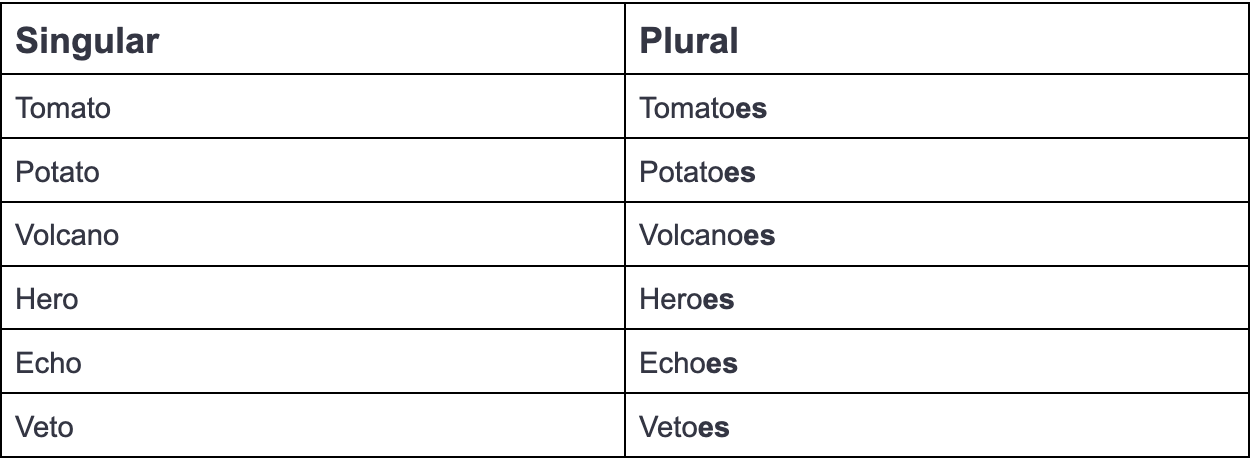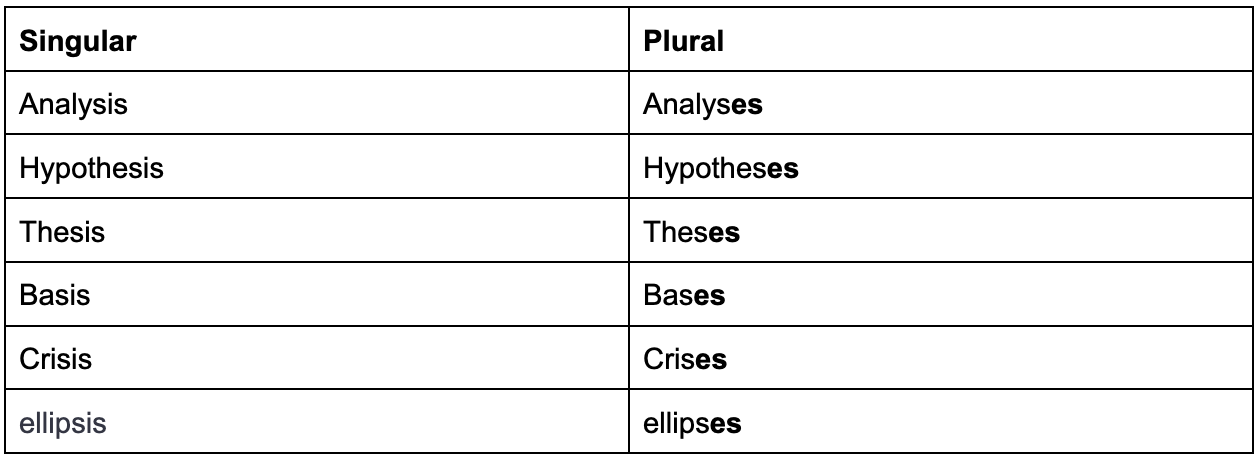In English, nouns can be either singular or plural.
Singular means only one while plural means more than one.
Nouns change form in English to show that they’re plural. It can be a little confusing because there are many different patterns to follow when changing singular nouns to be plural. We’ve broken down all of the most common patterns to help students understand how to make singular nouns plural in every situation.
Making Regular Nouns Plural
To make regular nouns plural, add s to the end.
Here are some examples of regular nouns in their singular and plural form.

Making nouns that end in s, -ss, -sh, -ch, -x, or -z Plural
To make nouns that end in s, -ss, -sh, -ch, -x, or -z, pluraladd es to the end.
However, some nouns that end in s or z, require that you double the s or z before adding the es when making them plural.


Making Nouns that end in f Plural
Nouns that end in f or fe often have the ending changed to ve before adding s to make them plural.

Making Nouns that end in y plural
To make a noun that ends in a consonant and y plural, replace the y with i and add es.

However, if the noun ends with a vowel and y, then you can simply add s to make it plural.

Making Nouns Ending in O Plural
If the singular noun ends in o, you’ll often (but not always) add es to make it plural.

However many nouns that end in o, simply take an s to be plural. Learners will need to practice seeing and using them.

Making Nouns Ending in is Plural
For nouns ending in is, the i is often replaced with e when making them plural.
It’s worth noting that the plural form for all of these nouns often shifts the emphasized syllable to the last one when spoken.

Nouns That Don’t Change When Plural
A number of nouns don’t change between their singular and plural forms. Many, but not all of these nouns are animals.

Irregular Plural Nouns
For historical reasons, Many nouns don’t follow even the previous rules. To use them correctly, one must learn and practice using them.
If you’re unsure, you can always refer back to this blog or look a noun up in the dictionary to find its plural form.
In this list, we sorted similar ones in groups.

Wrap Up
It’s completely understandable if this subject feels overwhelming. Even lifelong English speakers get some of these wrong from time to time. When it comes to using singular and plural nouns correctly, it’s a matter of practice just like with many other parts of language learning. If you’re looking for more practice learning English in a classroom or online, you can find out more about our full range of programs from beginner English classes all the way to SAT Prep, by contacting us for a free consultation.

